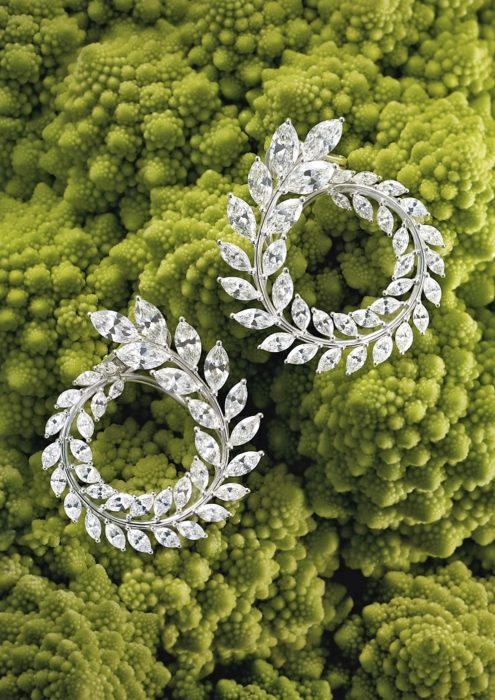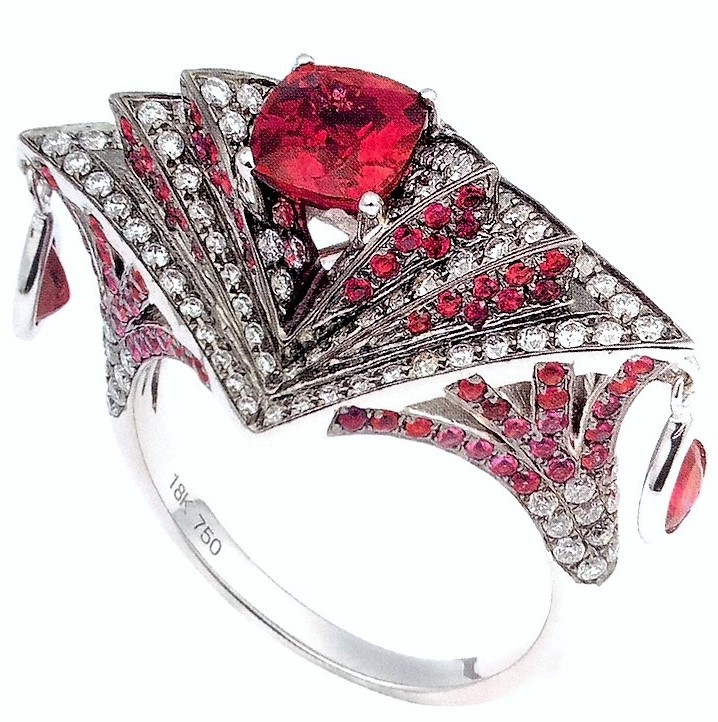Tiffany – Blue Book Collection
At a time when every brand worth its salt is rethinking how luxury is denuding Planet Earth, we start a monthly series on the efforts, initiatives and products that are rethinking the sustainability paradigm. Our first blog is on jewellery brands that have turned to ethical mining.
As the world gets more and more aware of the abuse of the environment, human rights violations and the impact it has on human and animal lives, some of the biggest luxury jewellery brands have announced that they are moving towards using ethically mine gems, recycled gold, silver and platinum.
Among the brands that have taken this crucial decision that will have a long term impact on our resources are Tiffany & Company and Chopard, who have begun working with ecologically conscious mines.
Tiffany
Tiffany was among the early starters. They voiced their opposition to the New World Mine in Montana, outside Yellowstone National Park, in the late 1990s. “We felt that if you could pick the worst place in the continental U.S. to have a mine, it would be at the doorstep of Yellowstone,” Michael J. Kowalski, Tiffany’s chairman told The New York Times. Since then, Tiffany has also voiced their opinions to the practices of the Pebble Mine in Alaska, which is at the head of “one of the last great salmon fisheries,” he said in the interview. The mine would ultimately lead to the fisheries’ destruction. The Environmental Protection Agency of the United States “is calling for the halt of the development of that mine, based on the concerns around the Clean Water Act,” he said. “It’s now in litigation, and is probably many years away from development, if it should ever happen at all.” Tiffany was also a founding member of the Initiative for Responsible Mining Assurance, a coalition that is currently in the final stages of development.
Almost six years ago, Chopard joined the Responsible Jewellery Council, a 600-member alliance based in London that sets guidelines on environmental, social and economic issues, and regulatory compliance. The jewellery behemoth is also working with the Alliance for Responsible Mining, a non-governmental organization based in South America.
Some of the brand’s jewels unveiled at the Cannes Film Festival over the years have been from their Green Carpet Collection. They are made in accordance with the Green Carpet Challenge, a platform to raise sustainability and ethical awareness, a movement founded by Livia Firth, the creative director of Eco-Age, a brand consulting firm based in London.
Chopard, Green Carpet Collection
The Eco-Age programme was launched by Chopard in 2013, in conjunction with Eco-Age. The programme gives financial support to mining communities through its NGO partner, the Alliance for Responsible Mining, which delivers a premium price for?the gold that mining communities produce, from whom it sources directly. “It is not an easy journey, but the right one,” said Caroline Scheufele, co-president and artistic director at Chopard. “Through this initiative [more than] a thousand families will benefit through social, environmental and training provision to help them improve their productivity and practices, and to thrive sustainably in a complex corner of the world.”
Other brands like US-based Brilliant Earth, which makes beautiful engagement and wedding rings, and British jeweler, Stephen Webster, are also sourcing gold from responsible mines. Chopard was the first high-end brand to source Fairmined gold from artisanal and small-scale mining”, says Siri Teilmann-Ibsen, communications coordinator at Alliance for Responsible Mining, the developer of the Fairmined certification – a global benchmark, along with its Fairtrade counterpart, for ethical gold mining.
Jayce Wong for Gemfields
Fabergé has become one of the most ethical coloured-stone jewellers around. Gemfields is a big name in ethically extracted gemstones and it acquired Fabergé in 2013, with a view to having a luxurious retail brand that stood for this philosophy. High-jewellery pieces such as the Romanov necklace, which features 79 emeralds comprising more than 185 carats, now make up Fabergé’s ethical portfolio. Fabergé also uses rare techniques such as hand-engraving and hot enamelling or guilloché, stone carving and the finest gem setting, employing local artisans and craftsmen.
A spokesperson for Fabergé says she has noticed a growing interest in sourcing. “Our clients are increasingly interested in the provenance of their jewels, and this ‘mine-to-finger’ approach provides unprecedented transparency and tells the story of each unique gemstone creation.”
While large scale mining is at a very preliminary stage of establishing a verifiable supply chain, several initiatives are already underway for Artisanal and Small Scale Mining (ASM). ASM is usually characterised by smaller operations that use less technology and mineral resources that are easy to access with small amounts of capital investment. Conservative estimates by the International Labour Organisation (ILO) in 1999 found that ASM employs a staggering 11 to 13 million people in over 30 countries, and between 80 and 100 million people depend on it as part of their livelihood strategies. Furthermore, these miners produce about $2bn worth of gold, gems and other precious metals per year.
The Kimberly Process
Ethical mining was given a fillip by the Kimberley Process Certification Scheme (KPCS) (kimberleyprocess.com), established in 2003 by stakeholders who wanted to protect the integrity of the diamond industry by stopping the flow of conflict diamonds. This process aims to stop diamond money funding rebel groups’ that employ young children in Africa to mine, by using a ‘chain of custody’ to trace diamonds from extraction to retail.
Africa Rubies – Gemfields
The Kimberley Process is a joint effort between 48 countries (with the European Union being one member), industry associations, multinational retailers, traders, cutters and NGOs. Member countries who implement the process agree to only export or import diamonds with other members who meet minimum requirements (mainly traceability and transparent reporting of diamonds and revenues). Estimates suggest that conflict diamonds now represent a fraction of one percent of the international trade in diamonds, compared to up to 15% in the 1990s.
Most consumers can be fairly sure that diamonds on the market now are conflict free – but no one has been able to determine if they were produced under environmentally sound conditions. De Beers, which currently produces 40% of the world’s diamonds, claim that all of them are conflict free, which is not surprising because they no longer source from African countries with a history of conflict.
Ultimately, luxury brands aver that it is only alert luxury consumers who can source that the jewellery they wear are sourced from the most impeccable, ethical sources.







